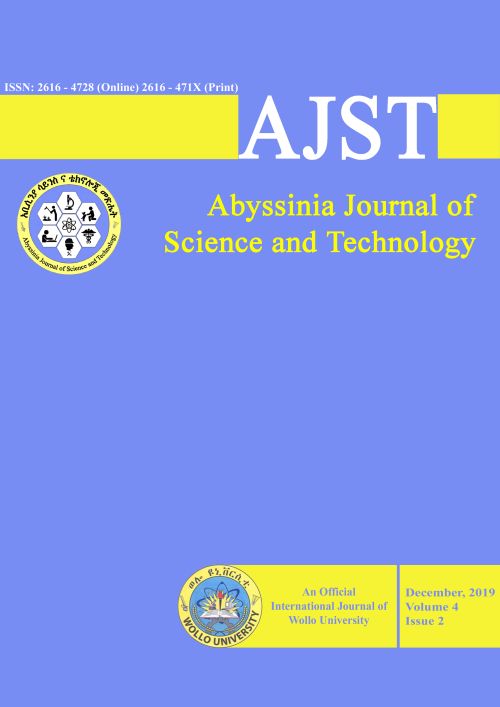Main Article Content
Performance of improved maize varieties for yield and yield components under irrigation at Koga, West Gojjam, Amhara region, Ethiopia
Abstract
Development and identification of adapted high yielding maize varieties for irrigation environment is fundamental for assuring food security. The trial was investigated to identify and recommend adaptable, high yielding maize varieties for irrigation environments. Twelve hybrids and six open pollinated maize varieties (OPV) were studied as a two sets of experiment in randomized complete block design with three replications. Experimental plots were irrigated using furrow irrigation every 14 days. Urea and DAP were used as nitrogen and phosphorus sources, respectively. Agronomic management practices were applied uniformly to all plots. Data were analyzed using SAS statistical software and treatment means were separated using least significant difference at 5%. Both hybrids and OPV indicated high genetic variation among themselves for most traits. Hybrid shone provided highest grain yield (13458 kg/ha) followed by PHB3253 (13320 kg/ha) in 2013/14 without significant difference between them. While in 2014/15, the highest grain yield was obtained from BH-660 (10747 kg ha-1) and AMH-760Q (10567 kg ha-1). Yield performance over years indicated that Shone gave the highest grain yield (11486 kgha-1) followed by AMH760Q (11277kg ha-1). Mean grain yield potential of OPV signposted that Gibe-1 was out yielding in each year (11673.8 kgha-1in 2013/14 and 10093.1 kgha-1 in 2014/15) and over years (10883.4kgha-1 ). Shone and Gibe-1 illustrated 35.1 % and 39.5% yield advantage respectively compared to their rain-fed performance. Therefore, Shone and Gibe-1 are recommended as potential improved varieties under irrigation for grain yield whereas AMH-760Q as potential quality protein for Koga irrigation scheme and similar environments.







